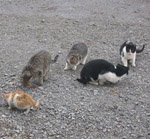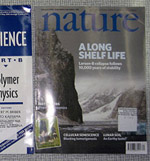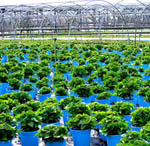Hear the animals roar: using acoustic sensors to measure wildlife abundance
 Mammals,
Mammals,  Research,
Research,  Technology-GIS
Technology-GIS  Loxodonta cyclotis in the Mbeli River, Nouabalé-Ndoki National Park, Congo. Image credit, Thomas Breuer.Here at CM, we're always excited to read studies on new technology-based methods for doing conservation fieldwork. So we were particularly happy to come across research from scientists at Cornell University and the Wildlife Conservation Society on using acoustic sensors to estimate species abundance based on animal calls. This technique holds promise for surveying wildlife that is otherwise difficult and expensive to study (e.g. animals with cryptic dung or nest sites and those frequenting flooded areas).
Loxodonta cyclotis in the Mbeli River, Nouabalé-Ndoki National Park, Congo. Image credit, Thomas Breuer.Here at CM, we're always excited to read studies on new technology-based methods for doing conservation fieldwork. So we were particularly happy to come across research from scientists at Cornell University and the Wildlife Conservation Society on using acoustic sensors to estimate species abundance based on animal calls. This technique holds promise for surveying wildlife that is otherwise difficult and expensive to study (e.g. animals with cryptic dung or nest sites and those frequenting flooded areas).
Their study presents a methodology for  An acoustic sensor in the field (though probably not Africa). Image credit, Cornell University.doing wildlife acoustic surveys, which they developed for African elephants (Loxodonta africana cyclotis) in the Central African Republic - though the method is potentially applicable a number of other species. I give a general outline of the methodology below. But as always, I highly recommend that you review the actual study methods because they go into much greater detail than I do.
An acoustic sensor in the field (though probably not Africa). Image credit, Cornell University.doing wildlife acoustic surveys, which they developed for African elephants (Loxodonta africana cyclotis) in the Central African Republic - though the method is potentially applicable a number of other species. I give a general outline of the methodology below. But as always, I highly recommend that you review the actual study methods because they go into much greater detail than I do.
Devoloping acoustic survey methods...
1) To calibrate the acoustic sensors for estimating abundance, observers counted elephants in a mineral rich forest clearing every 30 minutes. Acoustic data was collected simultaneously using autonomous recording units sensitive to low-frequency elephant calls. The researchers found a significant linear relationship between calling rate (mean = 26.1 calls ⁄ 20-min sampling period) and number of elephants (mean = 34.8 elephants) during 84 sampling periods.
2) The visual counting and acoustical data were analyzed to develop an acoustic-abundance index model that predicts number of animals from calling rates. They calculated an effective sampling area of 3.22 square kilometers for a single sensor.
3) Using the acoustic abundance index and effective sampling area, the researchers developed a formula for estimating abundance beyond the collective sampling area of a network of acoustic recorders at a new survey site.
Implications for conservation practice
This study indicates that acoustic surveys can be a valuable tool in studying distribution and abundance of vocal species. For elephants, the effective sampling area of a single sensor was 3.22 square kilometers compared to .01 square kilometers for a typical 1-kilometer dung transect. The researchers write:
"The use of long-term recorders facilitates sampling of large areas non-invasively and simultaneously captures the sounds of multiple target species as well as human activities including gunshots, chainsaws, and vehicle traffic."
However, the effectiveness of using acoustic surveys depends largely on whether wildlife vocal behavior is predictable. For elephants, the researchers developed the acoustic-abundance index through observations of individuals in a forest clearing. A key questions is whether this relationship holds the same in other settings. The researchers conclude that it does based on data from other research. While acoustic surveys are very promising, more study is needed to see how applicable this method is to other species.
--Reviewed by Rob Goldstein
Thompson, M., Schwager, S., Payne, K., & Turkalo, A. (2009). Acoustic estimation of wildlife abundance: methodology for vocal mammals in forested habitats African Journal of Ecology DOI: 10.1111/j.1365-2028.2009.01161.x




Reader Comments